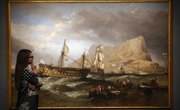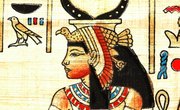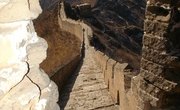Well-designed Spanish projects help high-school students gain a broader understanding of the culture, language and history of Spanish-speaking countries. Have students choose a specific country so they deepen their knowledge of a particular region. You can have students explore a variety of media to learn about and present aspects of culture in Spanish-speaking countries that appeal to all the senses.
Travel Brochures
Have students create a travel brochure to showcase some of the major tourist attractions in your country, such as historical sites, cultural centers, outdoor adventure areas and landmarks. Including a map with important geographical features allows readers to locate the attractions and get a general idea of travel distances.
For example, if the project is on Mexico, students might include Mexico City, Chichen Itza, Templo Mayor and Copper Canyon on the brochure. Students provide descriptive paragraphs in Spanish that detail the history of the locations and what tourists can hope to gain from their visit. The project might incorporate computer software to craft the brochure and include images and photographs to add visual appeal.
Maps, Treats and Slideshows
Have students make a flag that represents the Spanish country of their choice, using materials other than paper, suggests the Spanish II department at the James Kenan High School in North Carolina. Students might use wood, glass, fabric, metal, beads, duct tape or foam to create their flags. This process, combined with historical research of the flags, provides several angles for Spanish language learning.
Preparing a recipe that's native to a selected country to share with the class is a popular activity with several useful language-learning opportunities. Students hand out a copy of the recipe for classmates to keep and practice relevant vocabulary. Create a presentation slideshow to show the class while they're enjoying the treat, including topics such as the history of the capital city, geographical features, tourist attractions, customs, primary industries, major exports, size and population.
Poem Translations
Completing a translation of a famous poem or other literary work in Spanish from the selected country demonstrates and provides a sense of accomplishment. For example, students focusing on Spain might translate a famous quote from "Don Quixote" into English. Cuban poet Nicolás Guillén or Puerto Rican poet Luis Palés-Matos offer translation options for students choosing a Latin American focus.
Have high-school students research and discuss the history behind the literary work to add relevance and additional language-learning tasks. Images of the writers and poets, as well as where and how they lived, enhance an introduction to the literary piece.
Artwork Creations
To explore language and culture through visual media, have students paint a mural or create a piece of artwork that reflects the style of a renowned Spanish-speaking artist. For example, students who choose Mexico might create a piece of art that resembles the styles of Diego Rivera or Frida Kahlo.
Art provides a gateway to many styles and aspects of culture; students might endeavor to imitate the still-life paintings of Peruvian artist Victor Turpo or the cartoon drawings of Venezuelan Carmelo Fernandez Paez. These projects allow students to research facts about the artist's history and examine a variety of works to gain a better understanding of art throughout the Spanish-speaking world while practicing related language concepts.
Related Articles
References
Writer Bio
As curriculum developer and educator, Kristine Tucker has enjoyed the plethora of English assignments she's read (and graded!) over the years. Her experiences as vice-president of an energy consulting firm have given her the opportunity to explore business writing and HR. Tucker has a BA and holds Ohio teaching credentials.










